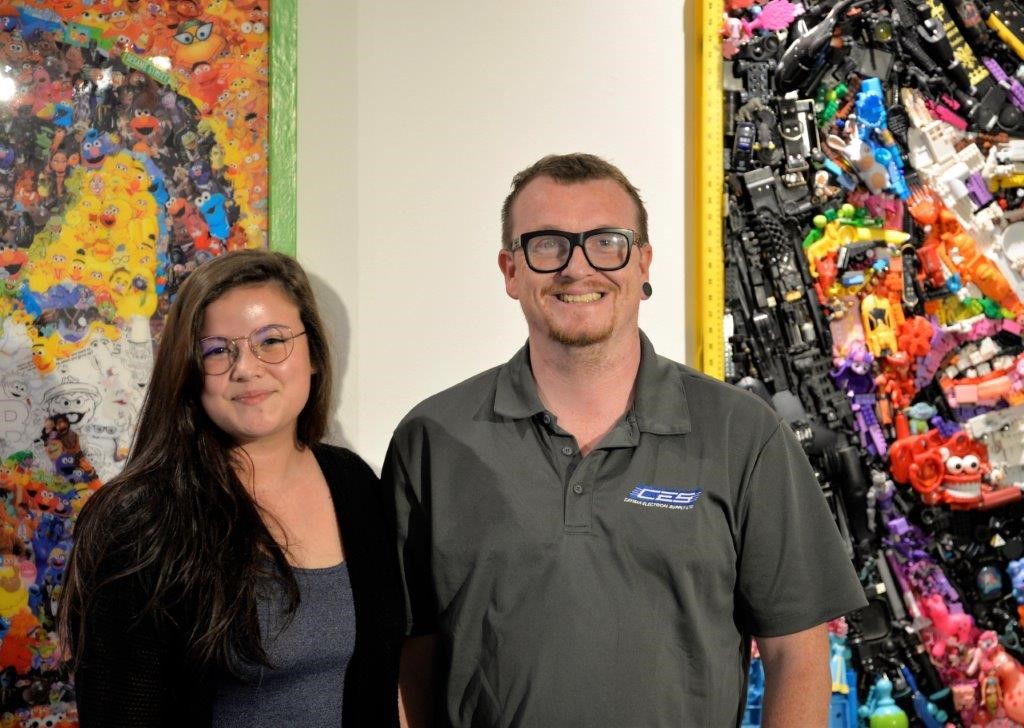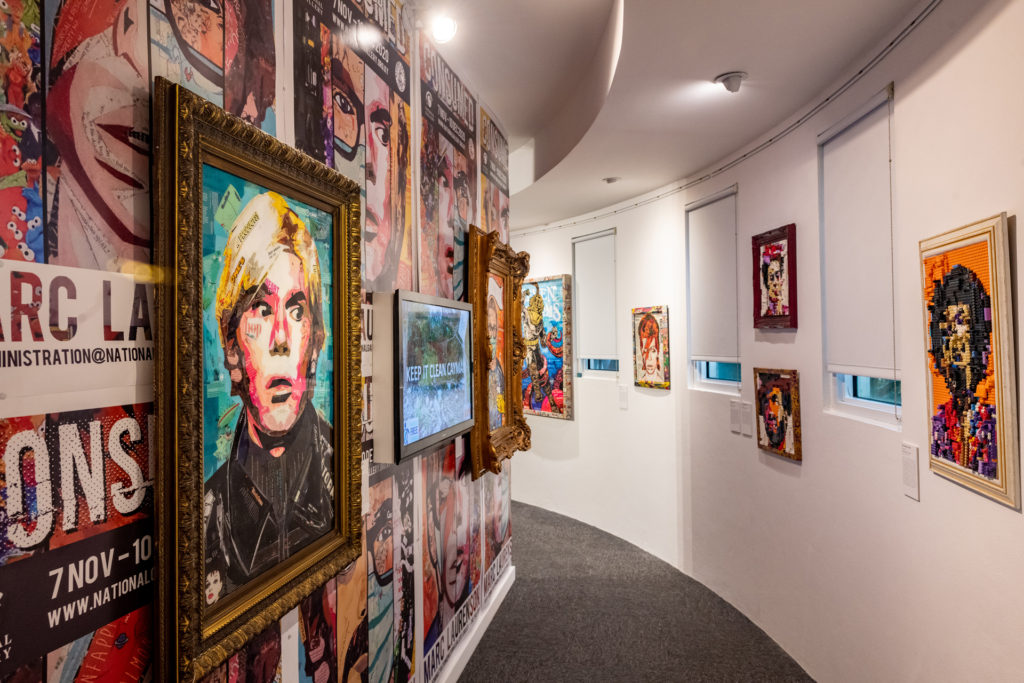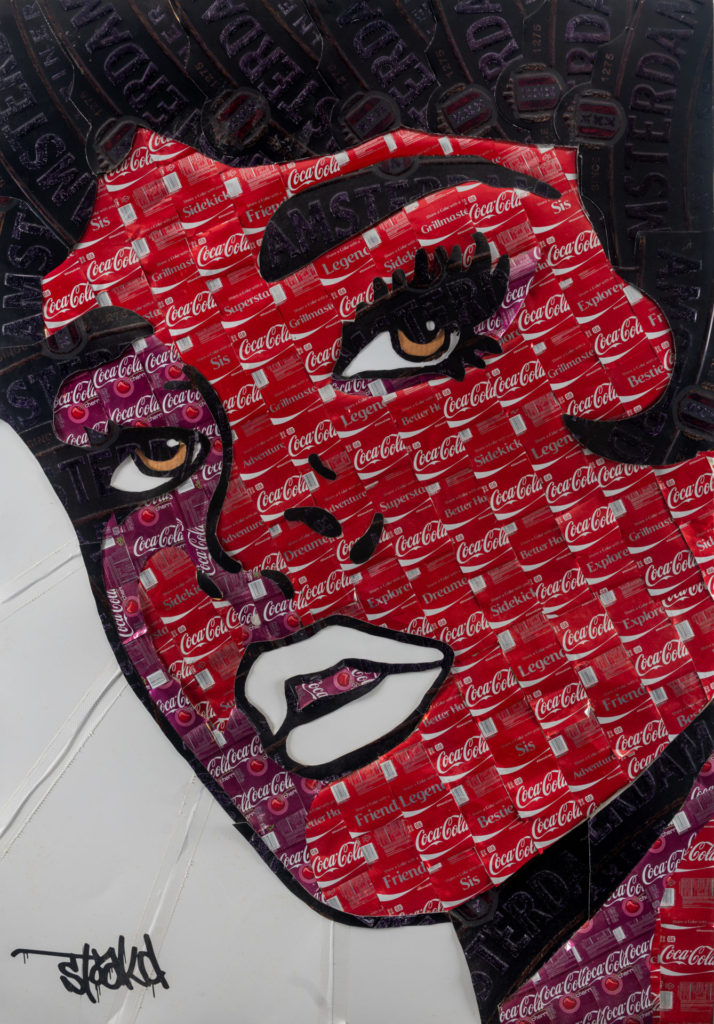A month into Consumed, Marc Laurenson’s first solo show at the National Gallery, the artist spoke with NGCI Intern Megan Arch on his artistic process, collaborative projects and the ongoing evolution of his work. Read more below.

Megan: Can you elaborate on your creative process?
Marc: I’m very detail-oriented. At home, I have a giant whiteboard, and I write out all the steps. It has to be sketched, then I have to put the initial colours and try to get all the background in place. Once all the background’s in place, then it’s all about the special details. Each art piece would basically be built in stages, so I would start with getting all the sketches done, and then I’d put it up on the wall, and as far as it got it would remain on the whiteboard; then I would move on to other pieces. I like to build the concept and then create a to do list after the artwork has been initially sketched, then I line all my ducks up to make sure that it runs all the way to the end so I know ‘ this is what’s missing, this is what I still need to do, this is what I have to get done.’ As long as I get my process in place, the artwork has to work.
Megan: Do you find the environment in which you create has an effect on the work? Do you create at a certain time of the day, or listen to music as you work?
Marc: I only have a limited time to do the artwork. I have a day job which is 7am to 5pm and a little girl who is five years old, so basically the only time I can really do this is after I put her to bed at about 8 o’clock or any time on the weekend. It all really depends on what our schedule is like as a family. When it comes to doing the artwork, I always play music in the background. Actually, I have a list of artists whose music isn’t enough to distract me but I can have them as background music; if I sing along, I sing along and if not, it would still push me to be able to do the artwork without being distracted.

Megan: How has your work evolved over time?
Marc: I started really pushing doing artwork when I was in Australia in about 2005. I had done a design for a friend of mine as a birthday present; when I gave it to her she said, “Oh my God, I’m stoked,” and that kind of just stuck with me. It was amazing – I still give her credit today for that – her name is Laura Capel. That was basically the start, and from there I was trying to see what else I could do, what else I could try. At the time I was learning Photoshop and Illustrator so there was a learning curve trying to figure it all out. In 2015, I started the company STOAK’D here in the Cayman Islands, and within the first three months of opening, we had The Better Half – which is the Coca-Cola portrait of my wife – in a National Gallery exhibit. The reason we went for the recycled artwork instead of just doing a normal painting is that for this exhibit there were a lot of amazing local artists that could paint, and at the time I wasn’t actually a very good painter, so I came up with a new concept of how to do my own artwork where I wasn’t doing digital designs and I wasn’t painting. I started using mixed media and recycling Coca-Cola cans to make the portrait for that exhibit. Slowly but surely, it just morphed to the point where I only really make recycled artwork now.

Megan: Have you always used reclaimed objects in your work? Who or what ignited the interest in you?
Marc: My wife and I started doing recycled artwork like I said, in 2015 when we did The Better Half. On our honeymoon, my wife and I were in France. We were going through the art galleries there and we saw a lot of recycled artwork and we kind of took some ideas and some concepts. After The Better Half, we had so many people on Island that saw us recycling and they would actually bring us material and say, “Well we don’t want to throw it away but we don’t want to keep it; we know you can do something with it.” They started just off-loading a lot of material to me and my wife. It got to the point where we were somewhat hoarding boxes, so we realized that okay, we need to start sorting these out. We started putting them into colours, into different media: this one’s metal, this one’s card, this one’s paper. But then it got to the point where we had so much of it, if we didn’t start using some of the material, we couldn’t house it anymore. So, we went into overdrive to try to see what and how much we could use to make these artworks as fast as we could.
Megan: Is your work made collaboratively or do you prefer to work alone?
Marc: I come up with concepts of what I want to be done, but throughout the process, there is some sort of collaboration. My wife is an artist, so anytime I need extra help to get to the deadline, she helps me. She did with this show. I’m very happy to say this is my solo show because I created and designed each of the art pieces, but obviously being able to share the process of putting it all together with my wife – she understands how I would like it done to make sure that it gets to the end. With this show, because it was my first ever solo show, I did want to push the boundaries and have it be as ‘fine art’ as I can possibly get, so I did have a lady called Marcia Codner do all my resin. I have never done resin before. As the artworks were becoming complete, I never had the time to practice for myself. Marcia does resin with all her artworks, so I got her to resin them while I finished off the remaining pieces.